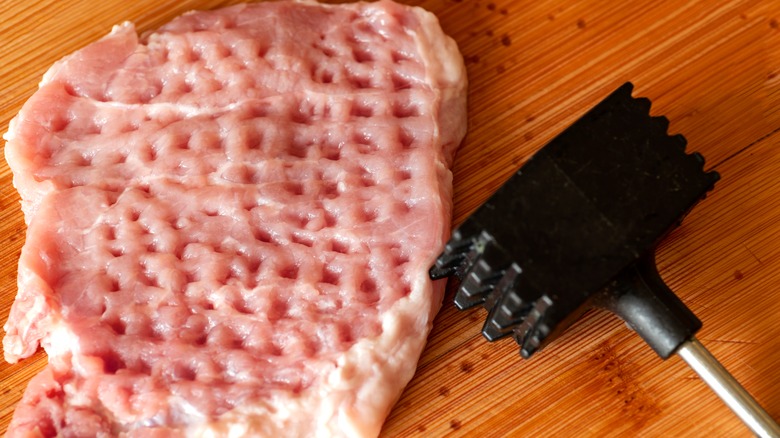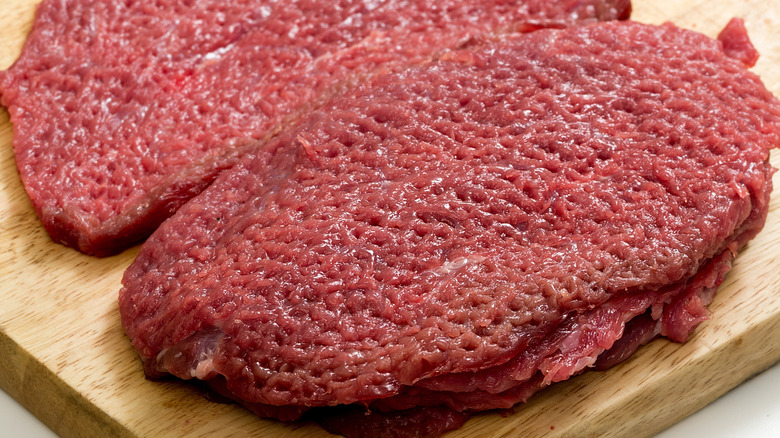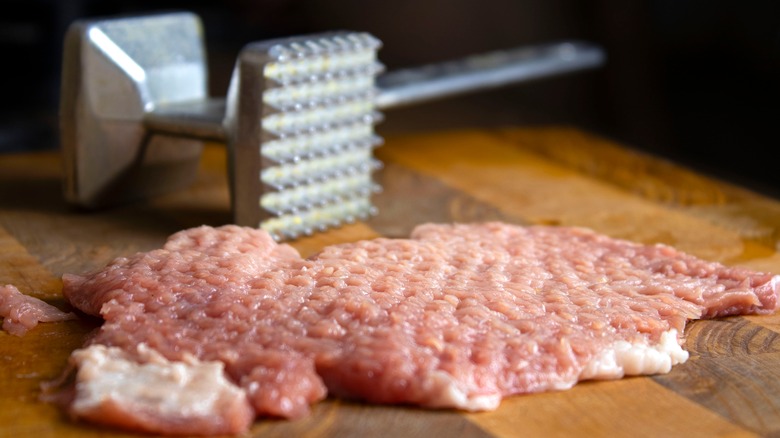The Reason Meat Tenderizers Have A Spiky Side
Have you ever stood at the deli counter of your local market and watched as your butcher slammed on a slab of beef with a mallet? It isn't just a fun way for them to let off steam, this is how they thoroughly tenderize your future dinner. You may typically let tough meat sit in a marinade for hours to tenderize it, but there's a faster and more therapeutic way to do it.
You can also be forgiven for assuming that all cuts of meat need to be tenderized or even that it is as easy as hitting your flank steak with a hammer. After all, a mallet is typically referred to as the simplest and most blunt tool mankind has created, but such simplicity undersells what the process of properly softening meat is about.
Your standard kitchen mallet has both a flat and a spiked side for a reason and it isn't because they serve the same exact purpose. Rather, the two sides work in tandem as they tenderize.
What does a tenderizer do?
While there are a variety of different techniques for tenderizing a steak, the most common is pounding it with a good meat mallet (also known as a kitchen mallet). While using the dedicated tool, one might find the flat end to be more inviting than the more intimidating spiked side.
However, the latter is actually the one you should be using for tenderizing. This is especially true with tougher cuts of beef. Any muscles used frequently by the cow, such as legs, shoulder, or abdominal, will be tougher and need to be broken down.
Using the tenderizing side of the mallet, make your way around the edge of your individual pieces of meat, gradually working your way in as the meat flattens and softens. Those spiked points puncture the slab with each impact, causing it to get more and more tender as the connective tissue of the muscles gives way. This is how you avoid the unwanted, leathery texture of a tough steak that might leave someone looking like a cow as they try to chew it.
The perks of softer meat
Properly breaking the connective tissue of the muscle is not just useful for when the meat makes it to the plate but actually has benefits throughout the cooking process as well. Tenderizing your meat with the spiked mallet will help marinades soak in easier and also reduces cooking time. Minimizing the length of time a piece of meat spends on the grill or in a skillet is not just convenient but helps it retain its natural juices, making for a more moist and enjoyable meal.
The meat will also cook through more quickly if it has a consistent thickness. That is where you make use of the other side of your mallet. While the tenderizing side of your mallet does flatten out your meat to some degree, the more consistent surface area of its blunt side does so more effectively without tearing the meat apart with excess force or cutting.
Properly flattening meat is actually vital for certain recipes such as chicken cordon bleu as opposed to being just a recommendation for pork chops or steaks.


